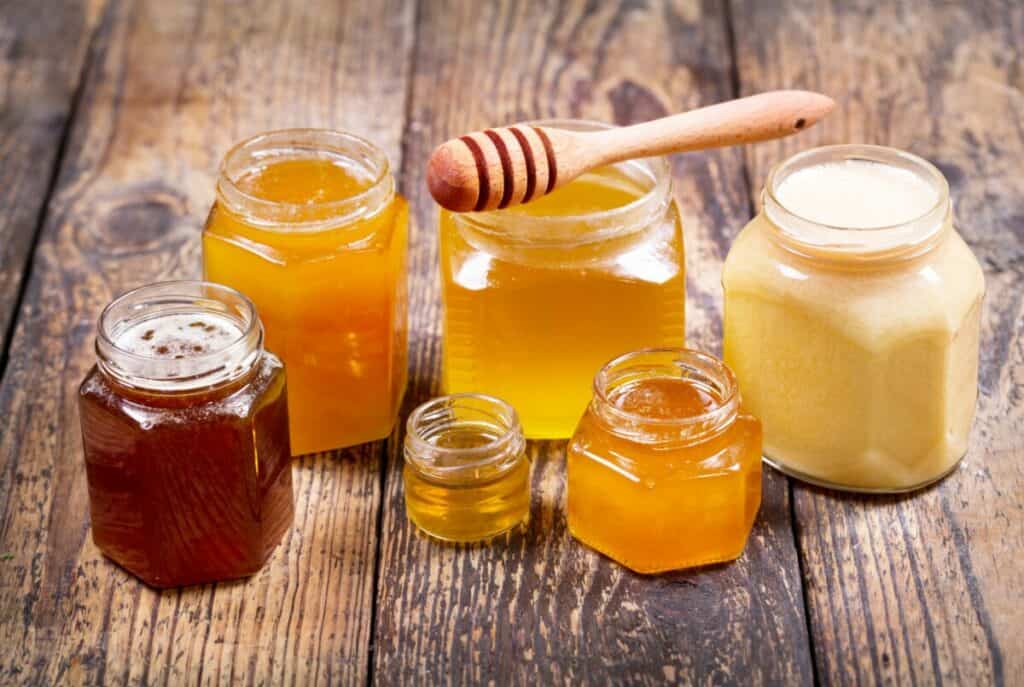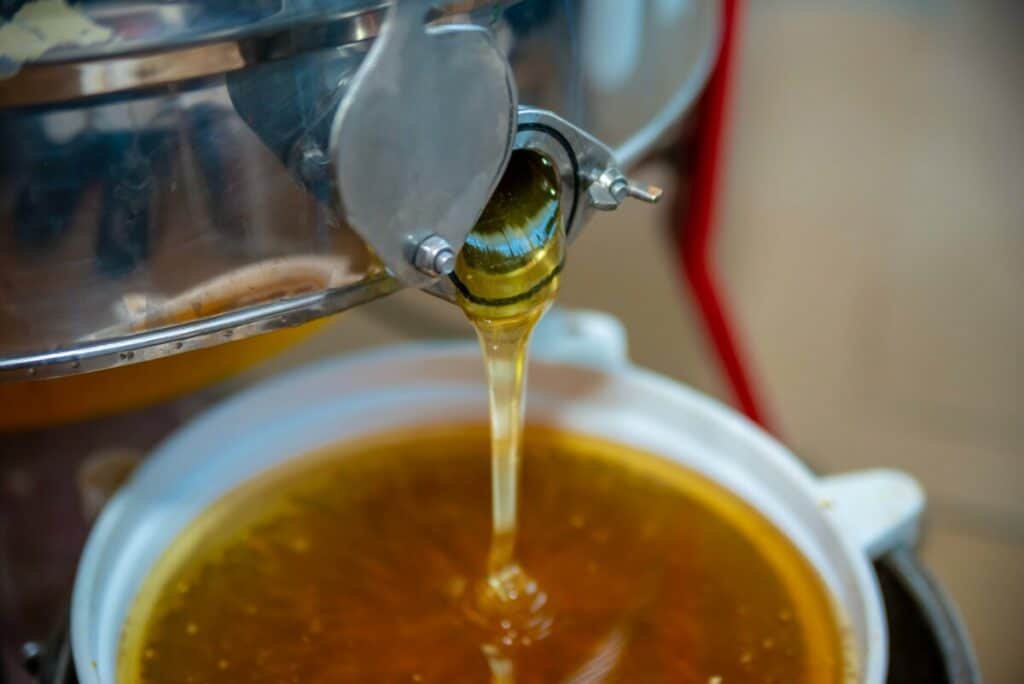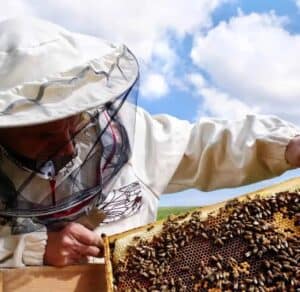How Long Does It Take To Strain Honey? Filter Honey Fast!
Beekeepers go through an incredible amount of work before enjoying the final product of fresh, natural, honey. The last steps of this process are in the straining and packaging of the honey, but these too can be time-consuming and meticulous tasks.
Straining honey can be a quick process when done correctly. Heating the honey and using proper straining methods can make the final step of straining and bottling simple and efficient. This can be done with any amount of honey using cheesecloth, metal strainers, paint filters, or other grated tools.
There are many different ways that honey can be properly strained and filtered. Here are some of the most effective and time-efficient methods of preparing honey in the final stages.
How Long Does It Take to Strain Honey?

The amount of time it takes to strain honey depends on a few factors: temperature, quantity, and straining tool or method. A few of the most common ways to strain honey are with a metal filter, cheesecloth, or a paint filter. All of these will be effective in separating the unwanted elements from your honey and preparing it to be bottled for use. Depending on how many stages of straining you choose to implicate, and the amount of honey you strain, this could span anywhere from a few minutes to several days.
How To Strain & Filter Honey Quickly
Straining honey quickly is not a difficult task when done with proper tools and information. Beekeepers should be aware of the temperature at which the honey is being stored. The use of a honey gate on the bottom of the final container will help this be a simple process and provide you with a clean, filtered, and finished product of fresh honey to use as you please.
Temperature
The temperature at which the honey is stored is extremely important and will impact the speed of your filtering process immensely. Honey will be the best consistency for straining when stored at room temperature or warmer. Keep in mind that the warmer the temperature, the more the honey will be of a liquid consistency. When stored at cooler temperatures, honey will be more solid, and move much more slowly through filters.
Honey Gate
A honey gate is a specific type of spigot that is designed especially for the movement of honey from one container to another. Whether using one or multiple phases of filtering and methods, the final step should move the newly filtered honey into a container of appropriate size that has a honey gate installed at the bottom. This way, when the honey has passed through the final filtering agent, it can be sent through the honey gate and into the final containers for storage, use, or selling.

Different Filtering Tools & Methods
Beekeepers can use a variety of different straining and filtering tools and methods of removing undesirable mediums from their honey. Nearly all of which can be done on a larger or smaller scale based on the amount of honey produced and desired.
There are also varying sizes of the equipment used for this process, so be sure to find the sizes of tools that will be appropriate for the amount of honey you are working with. If you begin to produce more honey later on, you can always purchase another set and use both simultaneously, or plan on spending more time to send some of the honey through, with another batch a step or two behind.
Cheesecloth
As many people in food preparation are aware, cheesecloth is a light, gauze-like fabric that can be used as a sort of mesh netting in many food preparation actions. In the use of honey filtering, the cheesecloth is generally cut into several large sections of the same size or folded to provide a similar result.
The fabric can then be secured inside of a bucket, one with a honey gate installed at the bottom if this is the last or only filtering of the honey, and left as a kind of net inside. The honey can then be poured from another container onto the cheesecloth. Due to the fabric’s lightweight density and gauze-like openings, the honey will strain through the cheesecloth. Any larger, unwanted wax chunks, honeycomb, bee legs, or other rough materials will be left in the cheesecloth fabric, while the honey that filters through, will be pure and free of unwanted junk.
If filling the container with honey higher than the level of the cheesecloth, you can collect the sides of the fabric into your fist, and lift the resulting sack-like formation upwards, allowing the remaining honey to filter through, and leaving the bucket full of only filtered honey. When this bucket has a honey gate, another option would be to open the honey gate above another container and allow the filtered honey to enter other containers, clearing room for the honey level to lower within the bucket and provide more of the filtered product.
Metal or Plastic Grate
There are several types of metal and plastic grate-like filters. Some stack in tiers, providing two or three levels of strainers. Others are shaped in funnels, bowls, or more flat like a pie tin! Regardless of the shape, this type of filter works in the same basic manner.
The filter should be placed on the top, or suspended inside, of the container. The honey should then be poured into the container with a grate-like filter. Honey will flow through the holes in the grate and will be clear when stored in the lower part of the bucket. Unwanted materials will be left above this pure honey inside the grate to be tossed aside.
Paint Filter
This method is one implemented by many beginning beekeepers and is used much like the cheesecloth. They place a paint filter, a netlike shape formed from a gauze-like material, inside of the bucket. Honey can then be poured inside of this bucket, and will pass through the paint filter. Then, the sides of the paint filter can be gathered together above the center of the bucket. Lift the paint filter up, and if possible, leave it hanging suspended above the bucket to allow the remaining honey to be filtered.

Joseph Davis
My goal is to show that anyone can take up beekeeping and it can be a very rewarding hobby. I strive to share my experiences and answer any questions you may have.
